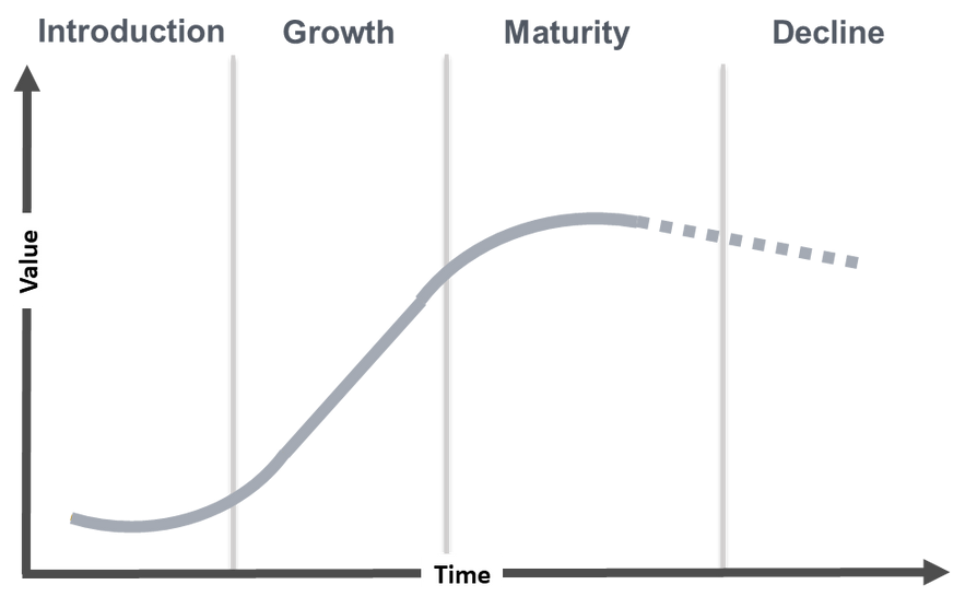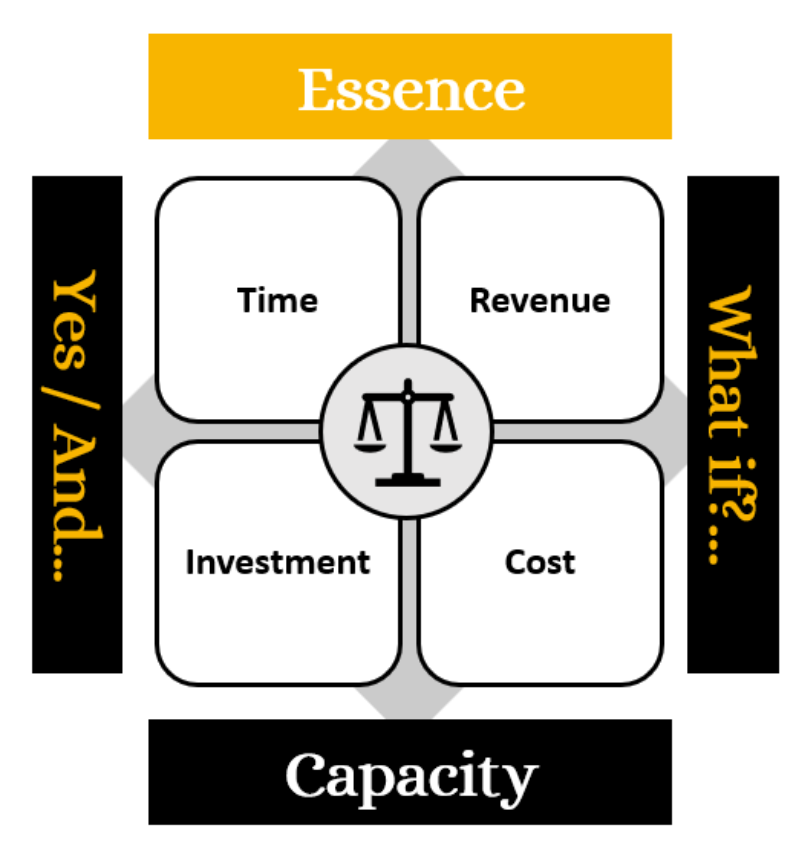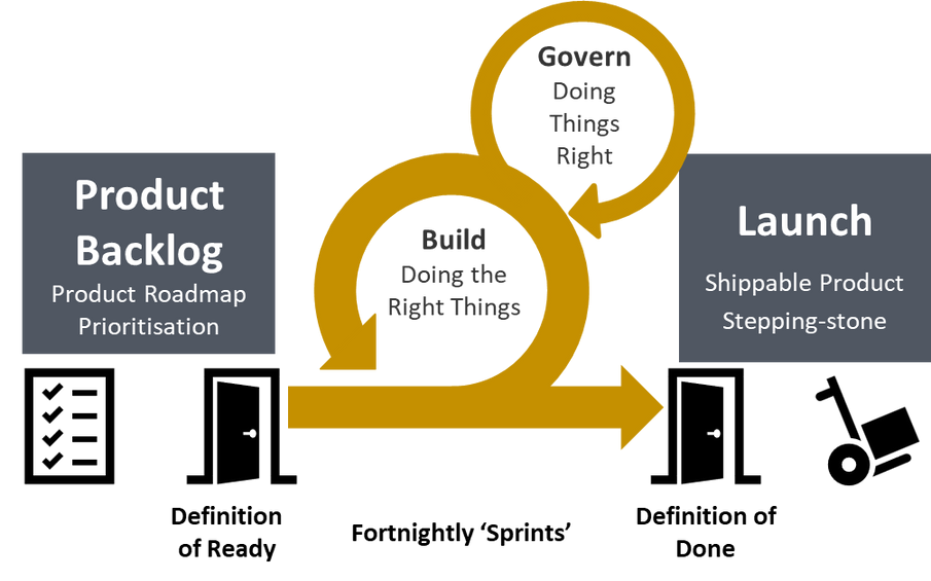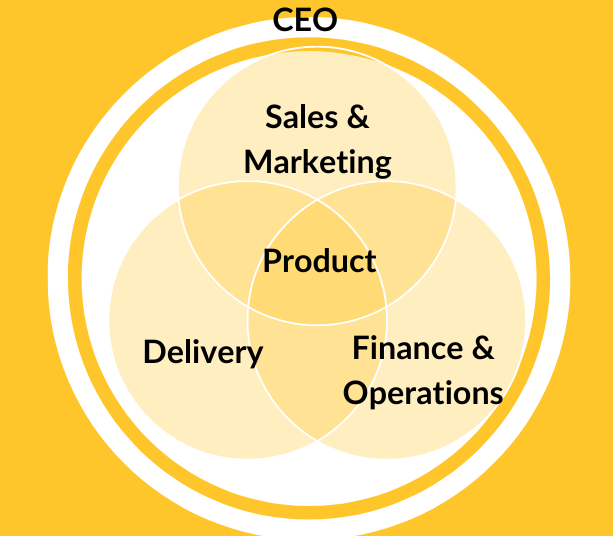It can feel like your are running to keep up. It’s difficult to recruit, inflation is rampant, supply chains can be flaky, even core technology tools have outages, and world events have local rampifications
We are still in a volatile, uncertain and complex time – We are in a VUCA world:

Where do I prioritise to stay resilient in these times
Often I find companies first looking at costs and sales as a way of staying resilient
- Should you look at rapid cost control?
- Should you drive more marketing?
- Is it a better focus on short term sales?
These are often sticking plasters if the core product set and delivery capability are not in place. The following 7 questions can help you think about your product set and what to do about them.
A review of your product set can help build resilience
- Do I actually have a product problem?
- Do I have the right product mix for now and the future?
- Do my product propositions resonate today?
- Do we treat the end to end experience as a product?
- Do I ‘play’ what-if to shape my product roadmap?
- Do I have a robust product capability to deliver?
- Do we have the right mindset for product success?
1. Do I actually have a product problem?
The solution might not be better sales or marketing. The market may have changed & customers want different things. For example, even post COVID, with people not coming into the office so often, groups like choirs or pubs or restaurant have lower footfall or attendance. I know several choirs who then went permanently ‘hybrid’ – having some, in person, events and one night a week virtual.
So this then begs the question whether the products are hitting the right point and what you might need to adapt about the product – pricing, people, process, technology, delivery or cost model.
The business model canvas is a good way of looking at your business and product models to see where you might need to adjust
2 Do I have the right product mix for now and the future?
Too often I find businesses that have a published set of products, and actually deliver a completely different set of outcomes. A few years back I ran the software support department for a major player in the bank payments world. They had a ‘product’ and sold it to several banks. The banks assumed that it truly was a product, but because development and support were separate, each new implementation took on the latest development tools, leaving support with a different mix of technology for each previous client. Furthermore, what we learnt in support wasn’t being built back in the core product, so after each new sale, we had to re-implement the support fixes from previous projects.
For another client we looked at their list of products and then went back over the last 18 months of sales to see what was really being sold, and discovered a whole host of potential solutions that just needed a little re-packaging and both could be sold more effectively and reduce the cost of delivery.
Here’s four questions to consider:
- Do you know all the products you sell?
- How much is bespoke and could be productised?
- Where do the products fit on the lifecycle?
- Do you have any products that you need to retire (but can’t)?
3 Do my product propositions resonate today?
Often I see companies who have a core product and that has worked well for a number of years. It has evolved but we are in a step change in the market. You might find sales slowly dropping, and more excuses on why the sale didn’t work, but since this is incremental drop, it doesn’t feel like a big change until you look over time.
For one client they had a good bespoke service, but struggle against ‘cheap and cheerful’ competitors. Each month in the sale meeting there would be complaints against the customer for buying the wrong, cheaper solution. Only after several months of these regular complaints on losses did we then decide how we might reposition the product, and offer the client a different solution at a lower price. This meant we weren’t competing head on with the cheaper product, but solving the issue in a better way for the client.

Things to consider about your proposition
- Has the market changed but the proposition hasn’t?
- Has the competition changed?
- Are we pricing correctly?
- Do we need to adjust the benefits (features) of the product?
- Do our customers understand what this really does?
- Are we telling people of the successes it gives?
4 Do we treat the end to end experience as a product?
Our client delivery elements are not the only products. Often I see technology-based businesses put product ownership in the hands of the technical development lead. This then can skew the mindset of the product to just think about the technical element. For example, at one client the technical lead ran the product, which was an application aimed at teenagers and young adults. Just before launch we realised that the purchasers of the product would be parents and adults, but the developers had been so keen on developing the app that they hadn’t built this payment mechanism. We then had to build a web-site service for people to pay and a mechanism for the users to use these payments. If the team had considered the end-to-end journey as ‘the product’ they would have seen these gaps.
A good product can fall down if the end-to-end experience is no good. I often consider the marketing, service, and upsell elements as part of the overall product. For example, Dyson vacuum cleaners, have a range of accessories that augment the sale, but the product was designed to have a common interface to add these accessories. If they hadn’t designed this eco-system into the product, it would have limited sales.
- Some things to consider:
- Are we looking at our market tools in the product? (Website, diagnostics, tasters etc)
- Are we looking at our service tools in the product?
- Are we looking at loyalty and sell-on in the product?
5 Do I ‘play’ what-if to shape my product road map?
If you look at kids doing role-play – being doctors, police officers and the like, they are playing out what-if scenarios. It is a chance to try things out before they grow up. Kittens do that with play hunting, learning the skills for later. And often, we are too formal in our processes that we don’t have time to play. But giving yourself this time with your products can help consider how to shape the product in future.
Examples could be: What do we do if energy costs double. Do we need to change our product to be more efficiently built? What do we do if we cannot source a major item (e.g. a particular chip from china), do we redesign our product, try to source it elsewhere?
A good way to structure this what if, is the grid below:
- Firstly decide what is the essence of your product … and it’s often the fulfilment of a human need for the customer – security, shelter, connection, resources etc. What makes the band Abba so special considering it has songs, movies, theatres and concerts. Well the essence is that it brings people together with joyful songs that people know … it brings happiness with your friends. That could be the essence
- The next is to thing about changes in time, revenue, investment, and cost – what impact does that have
- Then looking at combinations. Innovation comes from taking two themes in a new way. Poorly adherring glue pls paper makes sticky notes. But then that same glue is used instead of nails to stick pictures on the wall.
- Lastly consider changes in capacity. That might mean your staff, or buildings, or machinery. For example, how could we deliver this service to more people without using the rare highly skilled staff?

What if we explored reshaping our product:
- Reconstruct,
- Recombine
- Rearrange
- Reinvent
- Refine
6. Do I have a robust product capability to deliver?
It’s easy to think you are doing well because you are busy. I used to work for Arthur Andersen as a business consultant and they were one of the first places to have strong knowledge management tools – there was a history of proposals and deliverables across the world, and an ‘ask the network’ facility. Every time you started a new project or proposal, you could see several similar examples from the past and adapt them. I then moved to another consulting firm, and they were proud on how much work, and long hours they put into each proposal, patting each other’s backs for going the extra mile. But because they didn’t have the knowledge base, they were reinventing the solution with every proposal. They were investing time and effort in the common repeatable work, rather than the unique needs of the client. And their win rate was about 20%, compared to 50% or higher that I had been used to at Andersen. Their capability to deliver was poor but they didn’t know it, nor want to believe that all that hard work was a waste of time.

It’s always useful to relook at your product deliver capability as you grow or markets change:
- Do we have a clear and up to date product roadmap?
- Are we doing the right things?
- Are we doing them right?
- Are we delivering on our promises?
- Are we clear on what success is? … and tracking it?
7 Do we have the right mindset for product success?
The last element of getting product right is to have the right mindset. Often, I see the CEO trying to be all things rather than the conductor. Having a product director, even part-time, can help do the heavy thinking leaving the CEO to make decisions. The other challenge is where marketing, sales, delivery, and finance are all blaming each other for delays rather than working together for success.

- Is the CEO delegating properly?
- Does the right person own the whole product experience? (and not just the tech)
- Is there a ‘lob it over the fence’ mentality?
- Is there a blame mentality?
- Do we seek and listen to client and market feedback?
- Are we working together for joint success?
Bringing it together
That’s quite a few things to think about and it might feel daunting. But it does give the framework to do a checkpoint on how you are at this moment, and if any question is difficult to answer, then that may be a focus for further investigation.

